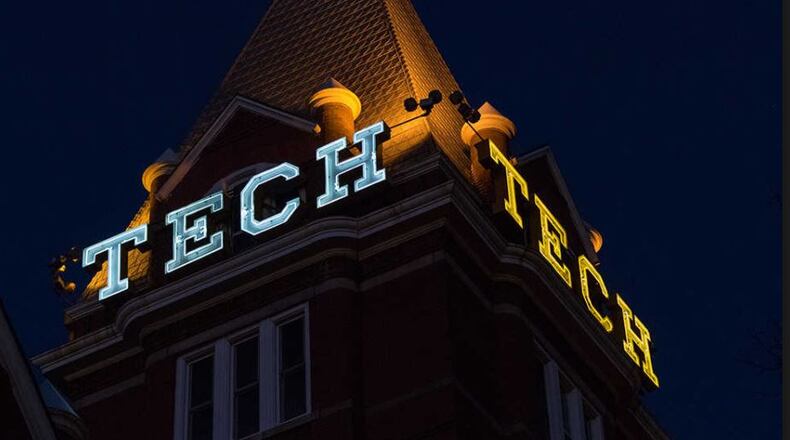Many families in Georgia are bracing themselves for the early admission decisions expected Friday from the University of Georgia.
Both UGA and Georgia Tech enjoy a bounty of applications and have too few seats for all the students who want to attend. That’s not the case for a growing number of small liberal arts colleges.
A convergence of economic and labor market upheavals have hurt small liberal arts colleges, some of which have closed their doors. Among the private colleges that shut down in recent times are Newbury College outside Boston, Concordia in Alabama and Hiwassee College in Tennessee. Three schools in Vermont held their last-ever commencements this year; Green Mountain, Southern Vermont colleges and the College of St. Joseph.
Fewer college students are majoring in the traditional liberal-arts disciplines -- English, history and philosophy -- that were a hallmark of small private campuses.
Studies have found a drop in students graduating with humanities degrees. In contrast, more students are earning degrees in engineering, health and medical sciences and the natural sciences.
Still bearing the financial scars of the Great Recession, families are apprehensive about sending their children to pricey colleges when there are less costly public counterparts. Parent are weighing the return of investment – how much will students have to spend on their degrees and how much can they expect to earn.
Also looming is the diminishing birthrate. The Northeast and Midwest have seen a slide in the number of high school graduates for nine years, due to declining birthrates and relocation of residents to other regions, including the South.
In his book, "Demographics and the Demand for Higher Education," economist Nathan D. Grawe predicts that the fertility decline and a delay in people starting families due to the recession could cause a 15 percent drop in the college-bound population by 2026. The shortfall will be worse for regional campuses that draw their students from nearby areas, compared to national universities that attract applicants from across the country.
(The most elite campuses, including the Ivy League, are largely immune from all these shifts than private schools with less fabled brand names.)
But even venerable names can suffer enrollment challenges in these changing times. Writing in the Chronicle of Higher Education, Bill Conley, vice president for enrollment management at Bucknell University, said:
The Great Recession devastated university endowments, shattered the majority of family wealth and income, and confounded the predictive modeling of enrollment managers. The near-term chaos was very real. Somehow, at varying rates, most colleges managed to survive, but in order to do so they established a "new normal" that would allow them to claim renewed stability for the long haul. That brings us to the summer of 2019, when the cracks in this new normal really started to show.
While Bucknell, a well-respected private Pennsylvania university, had a strong applicant pool, fewer of those applicants chose to enroll than expected. Conley wrote:
The enrollment-deposit spigot went dry, considerably short of our goal. As it turned out, we would need to enroll about 100 students from our wait list. In the process of calling these wait-listed applicants, we learned that Bucknell was hardly alone in its shortfall. Up and down the selectivity ladder, especially among private colleges, yield models had been invalidated by a sea change in student college-choice behavior.
Bucknell lost students to Virginia Tech and similar lower-cost, high-profile public institutions, according to Conley.
Georgia Tech is one of the high-profile public institutions experiencing rising interest. Tech is a top-ranked campus that consistently leads in returns on investment.
(That held true in an analysis released Thursday by the Georgetown University Center on Education and the Workforce. While most studies look at return on investment a decade out of college, Georgetown predicted it for 10 years and 40 years. Out of the 4,500 schools in the Georgetown analysis, Georgia Tech ranked 96th on return on investment after 10 years, and 27th after 40.)
The Chronicle asked Tech undergraduate admissions director Rick Clark to share his view of future enrollment challenges. The struggle at Tech will not be about whether the school survives, but what the socioeconomic makeup will be, said Clark.
As college expenses continue to climb and state funding continues to wane, Clark warns that prominent public universities will see less diversity in their socioeconomics. And that’s because of the burden on middle-class families -- who earn too much for substantial need-based aid -- to keep up with rising college costs.
Clark wrote:
Combined with the steadily increasing cost of attendance, the representation of high-income students on these campuses has ballooned. While programs like UNC's Carolina Covenant and Georgia Tech's Promise have done an excellent job of providing debt-free education to the neediest students, representation of middle-income students has continued to dissipate, effectively creating a financial barbell.
Without more concerted efforts, the middle-class student will continue to be squeezed out — or saddled with an unconscionable debt burden upon graduation. If our most prominent public universities are unable to re-establish public trust and effectively articulate their need for state appropriations to bolster need-based financial aid, they risk losing the very students they were created to educate.
Your thoughts?
About the Author
The Latest
Featured



